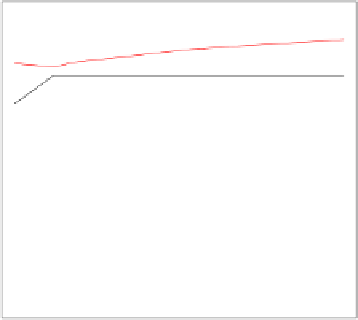Information Technology Reference
In-Depth Information
Figure 10 demonstrates that the ego networks can be used in estimating the global
properties of the web sites (ego, or center nodes). It displays the rank correlation
between the size of the ego network and the Page Rank
5
score [3] of the center node
in the entire network. The ego network sizes of the web sites can be used as a proxy
to estimate their relative Page Rank rankings. With small network samples,
<
20%,
we can get decent Page Rank ranking estimations.
Rank Correlation
between etimated network size and Page Rank
RE
FF
0.2
0.4
0.6
0.8
%Edges Sampled
Fig. 10
Correlation between the size of the sampled ego-network and the Page Rank of the
true ego-network
6
Conclusions
In this topic chapter, we propose to use in-link networks to help determine the at-
tributes of a web site and measure the effectiveness of viral marketing. We develop
an ego-centric sampling approach for capturing the in-link network structure. We
verify that the proposed sampling approach works well in capturing ego network
structures, as long as the sample size is reasonable (20-30%). It outperforms the RE
method in terms of estimating the underlying degree and cluster coefficient distri-
butions of the ego networks, and converges asymptotically. We demonstrate that the
ego-centric approach has interesting application potential in determining the global
properties of the web sites and adds new information to in-links.
A major limitation of the approach lies in the fact that it is an ego-centric and
sampling approach. It cannot be used to evaluate the existence of nodes/links and
to find the shortest paths between web sites. Another limitation is that the sam-
ple in-link network does not give the full picture of the entire ego network, since
5
We use the ARPACK implementation of Page Rank found in the R igraph package.


















